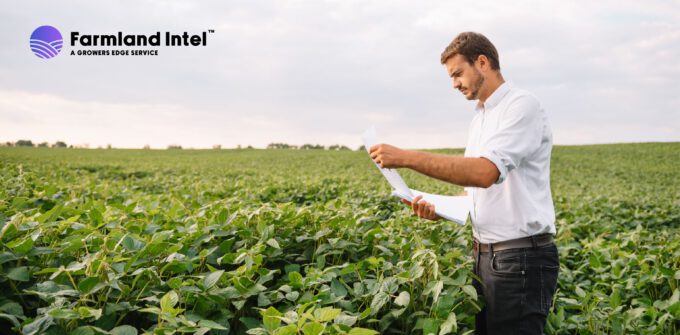You’ve set your budget, found favorable listings, and now it’s time to do the hard work of determining which piece of farmland will be the best investment. Leaning on data is how you can make that determination, and that’s where the value of analyzing farmland comes in.
Without the right data, you can face unexpected challenges that drain your finances and leave little room for returns, but there’s a way to avoid that. In this article, we’re removing the guesswork from how to analyze farmland listings to find an investment that produces stable returns and long-term growth.
What Drives Farmland Investment Value?
Before analyzing listings, you need to understand the value of the investment you plan to make. For farmland that includes three key factors:
- Soil Quality: Is the soil productive enough for consistent yields?
- Water Availability: Does the property have reliable irrigation?
- Location: What’s the proximity to grain elevators, infrastructure, and growing markets?
The answers to these questions are where you start to uncover the land value of each listing. The process of getting this valuable data can get frustrating if you’re trying to dig through country records, but some tools get you all of this critical information faster.
With farmland valuation tools, you can get instant access to soil maps, water data, and local market trends — all in one place.
How To Determine Market Value When Investing In Farmland
Can you guess one of the most common mistakes investors make when purchasing farmland? If you guessed overpaying, you’d be correct. The consequences of overpaying can be detrimental to your long-term growth, creating an uphill battle when trying to create cash flow or even resell the land.
Here’s how you can avoid this mistake:
- Compare recent sales of similar properties to ensure the asking price is aligned with market trends.
- Assess the rental income potential of the land to determine if it supports the purchase price and ROI.
- Factor in soil productivity and land improvements, which both significantly affect land value.
This data allows you to make smarter investment decisions and avoid the costly effects of overpaying for land.
Analyzing Listings And The True ROI Of A Farmland Investment
A good investment has the potential to produce a 3-5% increase in land value. The key to getting that kind of return is going beyond what you see on the surface when analyzing listings. That comes with asking the right questions to reveal the true ROI of the land.
Those questions include:
- What is the current rental income?
- Are there easements in the title history or liens?
- Are the water rights transferable?
- Is the land consistently productive?
- Are local farmland values increasing or decreasing?
- What improvements in irrigation, fencing, or drainage have been made?
Land valuations software can give you answers to these questions, getting you one step closer to making a profitable investment.
Make Smarter Farmland Investments with Data-Driven Insights
Smart farmland investing starts with smart farmland analysis. Before committing, it’s important to gather as much information and data as possible. That’s where a tool with data-driven insights for purchases, sales, and mortgage approval decisions matters most.
Farmland Intel gets you critical and accurate insights so that you can make smarter and confident decisions. Learn more about how our data on soil surveys, crop history, and comparative land value helps you buy better farmland.



